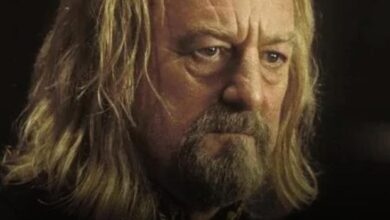Metallica’s 1991 “Monsters of Rock” concert in Moscow attracted a crowd of over 1.6 million.
In 1991, Metallica’s performance at the “Monsters of Rock” festival in Moscow became a landmark event in the history of rock music. The concert, held on September 28, 1991, took place at Tushino Airfield and was one of the most significant live performances not only for the band but also in the context of global music events. The festival, which featured other prominent acts like AC/DC and Pantera, drew a staggering crowd of over 1.6 million people, making it one of the largest rock concerts ever held. This massive turnout was a testament to the widespread appeal of heavy metal and rock music during a time of significant change in Russia.
The concert occurred during a period of immense political and social transformation in Russia. The Soviet Union had just collapsed, and the country was in the early stages of transitioning from a communist regime to a more open, democratic society. This period of upheaval created an environment where Western cultural influences, particularly music, began to flood into the country, symbolizing freedom and a break from the rigid control of the past. Metallica’s performance, therefore, was more than just a concert; it was a symbol of this newfound openness and the possibilities that lay ahead for Russia.
For Metallica, this concert was an opportunity to reach a massive audience in a part of the world that had been largely closed off to Western music. The band, known for its aggressive sound and intense live performances, was at the height of its popularity, having just released their self-titled album, commonly referred to as “The Black Album.” This album featured some of their most iconic songs, such as “Enter Sandman” and “Nothing Else Matters,” which helped solidify their position as one of the biggest rock bands in the world. The Moscow concert allowed them to connect with fans who had only recently gained access to their music, creating a powerful and emotional experience for both the band and the audience.
The atmosphere at Tushino Airfield was electric, with a sea of fans stretching as far as the eye could see. Despite the challenges of managing such a vast crowd, the event was largely peaceful, with the music serving as a unifying force for those in attendance. Metallica’s performance was intense and energetic, with the band delivering a setlist that included some of their biggest hits. The combination of the band’s powerful music and the overwhelming sense of liberation in the crowd created a once-in-a-lifetime experience that those who were there would never forget.
The logistical challenges of organizing a concert of this scale were enormous. Coordinating security, sound, and logistics for over 1.6 million people required meticulous planning and execution. Despite these challenges, the event went off without major incidents, showcasing the potential of live music to bring people together on an unprecedented scale. The success of the concert demonstrated not only the draw of Metallica as a live act but also the universal appeal of rock music, even in regions that had been isolated from Western culture for decades.
This performance marked a significant moment in Metallica’s career. The band, formed in Los Angeles in 1981 by drummer Lars Ulrich and guitarist/vocalist James Hetfield, had already established itself as a force in the heavy metal scene with albums like “Master of Puppets” and “Ride the Lightning.” However, the release of “The Black Album” in 1991 catapulted them to global superstardom, thanks to its more polished production and accessible sound. The Moscow concert was a key part of their tour to promote this album and helped to further solidify their status as one of the world’s leading rock bands.
The 1991 “Monsters of Rock” concert in Moscow also highlighted the changing dynamics of global music distribution. With the fall of the Iron Curtain, Western music was no longer confined to the capitalist world; it began to spread rapidly into Eastern Europe and the former Soviet Union. For many Russian fans, this concert was their first opportunity to experience a live performance by a major Western band, and it left a lasting impact on the country’s music culture.
Over the years, this concert has taken on legendary status, often cited as one of the most significant live music events in history. It is frequently referenced in discussions about the role of music in political and cultural change, as well as in the broader narrative of Metallica’s career. The images and videos from the concert, showing a vast crowd of enthusiastic fans, have become iconic, symbolizing the power of music to transcend borders and bring people together.
In the years following the Moscow concert, Metallica continued to dominate the rock music scene, releasing numerous successful albums and maintaining a relentless touring schedule. Their ability to connect with audiences around the world, regardless of cultural or political differences, has been a key factor in their enduring popularity. The 1991 “Monsters of Rock” concert in Moscow remains a defining moment in their career, a powerful example of how music can serve as a bridge between different worlds.
Looking back, the Moscow concert stands out not just for its size, but for its significance in a moment of global transformation. It was more than just a show; it was a cultural event that reflected the changing tides of history. For Metallica and their fans, it was a night that captured the spirit of rock and roll in its purest form, leaving an indelible mark on the history of live music.



